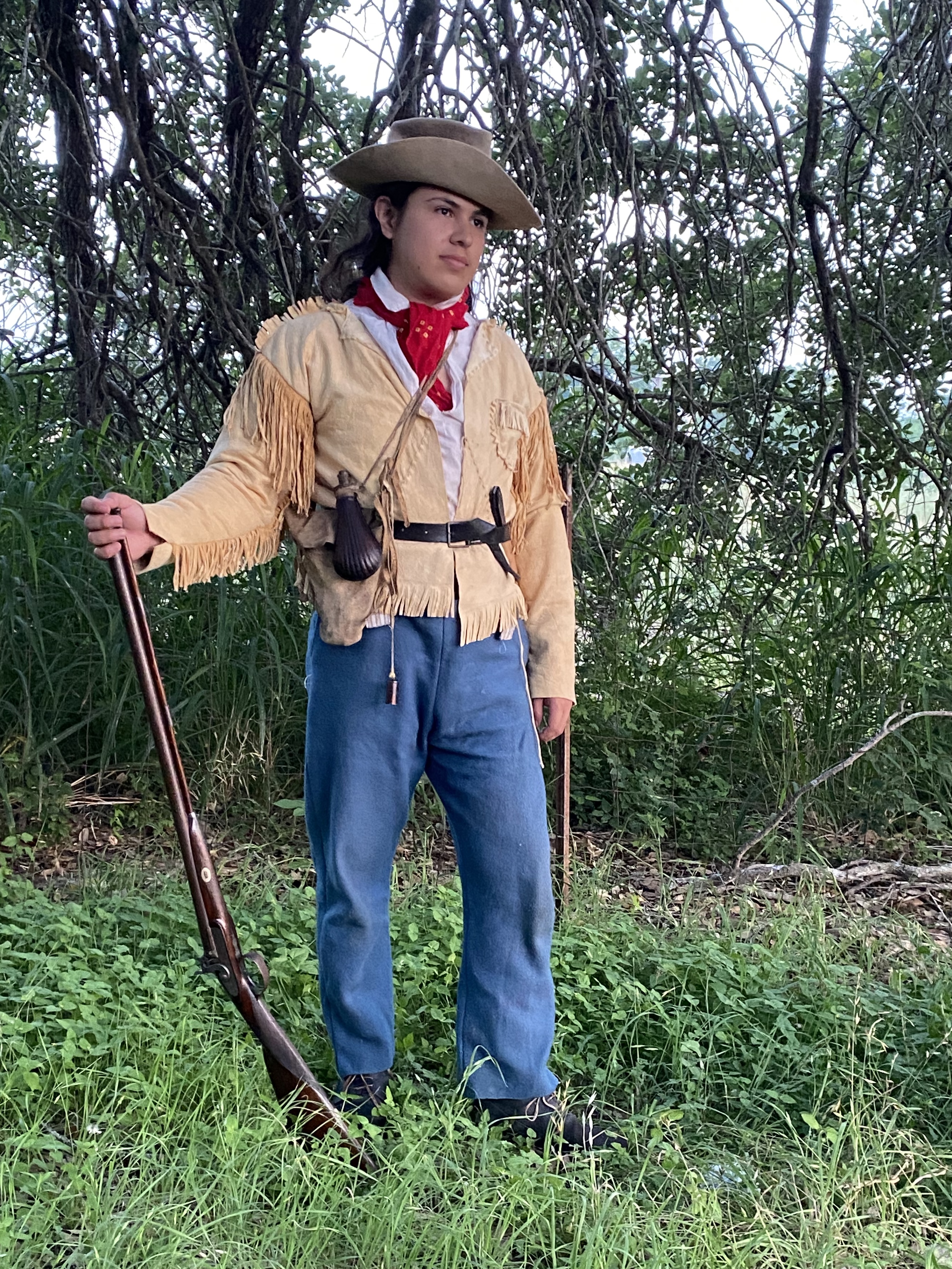“The Charms of Brown Bess”
- David Sifuentes

- Feb 8, 2021
- 4 min read

(Written by Jonathan Woodward)
"Brown Bess"
“An outspoken, flinty-lipped, brazen faced jade,
With a habit of looking men straight in the eyes,
At Blenheim and Rhamillies fops would confess
They were pierced to the heart by the charms of Brown
Bess”.[1] -Rudyard Kipling
Whenever people think of Texas history and the Texas Revolution in particular, they will almost inevitably move to the topic of arms. Most are familiar with the favored weapon of the Texian rebels, the famous Pennsylvania or Kentucky long rifle. But another weapon played just as vital a role in the hands of both Mexican and Texian troops: the Brown Bess musket. The Brown Bess was a .750 caliber smoothbore flintlock musket that was accurate to around seventy yards.[2] This was considered effective for the volley firing of the eighteenth and much of the nineteenth centuries.[3] The first model of Brown Bess, the Long Land Pattern, was adopted into British service the 1720s, followed by the Short Land Pattern in the 1760s, and the Indian Pattern in 1793. The Indian Pattern musket was the arm with which the Duke of Wellington’s army defeated Napoleon at the Battle of Waterloo in 1815 and was also the weapon that Antonio López de Santa Anna armed many of his troops with.
Mexico had purchased thousands of surplus Indian Pattern muskets by 1835 and issued them to many of their infantry battalions. The primary users of the weapon were the battalion’s fusileros (fusiliers) and granderos (grenadiers). The fusiliers were the regular soldiers attached to the battalion’s center companies, generally doing most of the fighting in battle.[4] The grenadiers were an elite company composed of the battalion’s best men, who were removed from the center companies and were generally held in reserve during battle to be committed during a critical juncture.[5] When Santa Anna marched his army into Texas to subdue the Revolution, most of his infantry would be armed with the Brown Bess. A Brown Bess ball killed Col. William B. Travis at the Alamo, while another crippled Col. James W. Fannin at Coleto Creek.
Texians also used the Brown Bess, especially as the Revolution wore on. With the capture of Presidio La Bahía and San Antonio de Bejar in 1835, the Texians had access to stores of Mexican equipment and weapons. Besses were undoubtedly amongst these captured arms. These captured muskets undoubtedly saw use with the Alamo defenders, where many men had stacks of weapons at their posts which they fired in rapid succession. This helped account to the huge losses suffered by the Mexican infantry as they stormed the compound. John Sowers Brooks, the Virginia-born staff officer of Fort Defiance (as the Texians renamed La Bahía) even used surplus Bess barrels to craft an “inferno machine”, a multi-barreled volley gun.
While the Texian’s long rifles outclassed the Bess in accuracy, the Bess had several advantages over the long rifle. First, as a smoothbore it was easier and quicker to load. To achieve accuracy with a long rifle, the user had to load a patched round ball that tightly fit the rifling. When loaded with loose powder and ball, this could take up to a minute per shot. By contrast, the Bess used paper cartridges, which a soldier bit open, primed the pan, then rammed the paper and subcaliber ball down the bore. With a smooth bore, the lack of rifling made ramming easier and a good soldier was often able to load and fire three times in a minute. Second, the Bess was often more reliable. The large lock increased the spark of the flint which kept the musket firing even after several shots and the smooth bore helped mitigate black powder fouling, which had no crevices to collect in. Long rifles had small, delicate locks that threw fewer sparks and the rifling collected fouling, which made the rifle harder to load with each shot. Long rifles often need to be cleaned after three or four shots to operate optimally. Third, the Bess can mount a bayonet, effectively turning into a spear. This ability was vital to the Mexican victory at the Alamo, where Santa Anna ordered that the bayonets should be in “perfect order.”[6] The Mexican infantry made great use of their bayonets inside the Alamo, particularly in the long barracks, where they grappled with Texians in the darkness. Even James Bowie met his end on Mexican bayonets. A long rifle could not mount a bayonet, effectively leaving the user defenseless at close range.
Modern Texans revere the long rifle and often ignore the Brown Bess, but this humble musket deserves far more credit than it often receives. In the hands of both Mexican and Texian forces, this workhorse of a weapon saw use in nearly every battle of the Revolution from the Alamo to San Jacinto. The Bess would continue to see action in the hands of Mexican troops during the Mexican-American War (including the famous Saint Patrick’s Battalion), and would even see use amongst Confederate troops in the early days of the American Civil War. Those who used the weapon likely appreciated its practicality and simplicity, easily falling to charms of Brown Bess.
[1] Rudyard Kipling, “Brown Bess”, in Songs from Books: The Years Between and Parodies by Rudyard Kipling, 61. [2]John Bryant, The Arms and Weapons of the Alamo Defenders, http://www.tamu.edu/faculty/ccbn/dewitt/adp/history/1836/the_battle/the_weapons/small_arms.html, accessed February 20, 2017. [3] Bryant, The Arms and Weapons of the Alamo Defenders. [4] Hardin, Texian Iliad, 99. [5] Hardin, Texian Iliad, 99. [6] Hardin, Texian Iliad, 138.




Comments